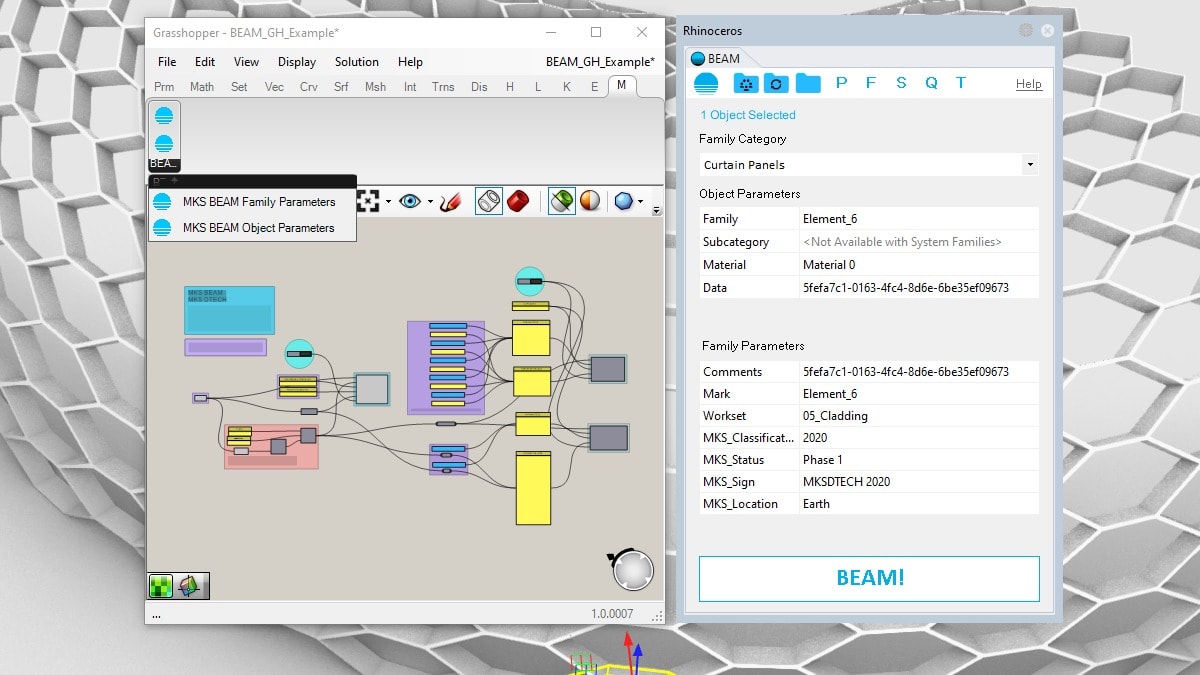A plug-in for Rhino design software that automates the conversion of 3D models for use in Revit is being used by two of the UK’s most high-profile architects.
Beam was developed by MKS DTECH to speed up the process of preparing Rhino models for use in BIM, which typically requires complex bespoke software scripting and file management.
The user interface includes tools to assign information and parameters to Rhino’s geometric objects, assign objects to families and then automatically move models between the platforms, potentially resulting in significant time savings.
The software launched last month and already has around 200 users across 16 countries. In the UK, four architecture practices are using it, including two large studios known for their structurally complex, boundary-pushing designs.

The user interface includes tools to assign information and parameters to Rhino’s geometric objects, assign objects to families and then automatically move models between the platforms
A spokesperson for MKS DTECH told BIM+: “Beam cuts design time because it solves a technical problem, taking a typically fragmented and complex workflow that requires a lot of scripting and visual design, to convert models in a fraction of the time. The feedback we have is that firms are able to work fewer hours and have their day better organised. The bigger the project, the more time users save because everything is managed the same way and automatically.”
Beam utilises a customised cache file format to transfer and archive design iterations, while a cloud-based option is available for remote collaboration.
It automatically imports elements grouped together in Revit families, with all the associated metadata. Users can assign categories, parameters and materials and update instances, add geometry to existing families and use special family types.
According to MKS DTECH, it enables teams to work on models in both 3D design platforms simultaneously without having to worry about how geometry and data is being populated.
All geometry is converted into Revit Form Geometry and special tools are available to clean it up once imported, for example to remove singularities and ensure the continuity of surfaces.
“We’re using ACIS as our base geometry kernel so we have the best compatibility, if it doesn’t go through with Beam it doesn’t go through by any other means,” said the spokesperson. “The plug-in splits up the file, so if one piece fails to transfer, only that piece fails, rather than the whole import.”
A file management system for non-imported objects locates the objects in Rhino and allows users to amend them.
Beam can also export to Dynamo to enable the creation of more complex parametric models and it will soon be updated to make it more useful in the later stages of design. For example, it will be possible to export complicated parametric families from Revit back to Rhino so designers can take advantage of more intuitive model manipulation in Rhino.
Another spokesperson for MKS DTECH said: “The best attribute of Beam is its simplicity – we have embedded into this solution all the scripts and background work needed to manage the workflow automatically, all it takes is a few clicks.”
Comments
Comments are closed.
















Good morning,
I wish to express an interest in BIM 3D modelling.
Can you advise, if there are any webinar / tutorials I can join in the near future?
Regards,
Patrick Leyden FCIOB